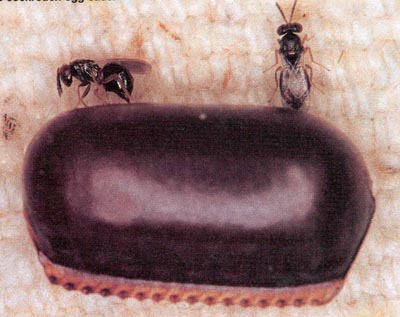Parasitic wasp larvae clean house by sanitizing cockroaches
Ars Technica » Scientific Method 2013-01-07

The life history of Ampulex compressa, the emerald cockroach wasp, is likely to make you squirm. A female wasp stings a cockroach—momentarily paralyzing its front legs—and drags it by its antennae to her burrow, where she glues a single egg to the roach’s leg. Once the larva hatches, it feeds carefully on the internal organs of the still-living insect, keeping it alive until it the larva is ready to pupate. At that point, the larva spins a cocoon inside the roach's exoskeleton and finally emerges as an adult, leaving the carcass of the now-dead cockroach behind.
The cockroach serves as both the restaurant and the meal for the wasp larva, but roaches are a notoriously filthy species that harbor and transmit some pretty nasty pathogens like Salmonella, E. coli, and the eggs of various roundworms. How do the larvae protect themselves from these pathogens while dining on the cockroach’s internal delicacies?
In this week’s issue of PNAS, a group of researchers report that emerald cockroach wasp larvae produce an antimicrobial secretion that helps sanitize the insides of their cockroach hosts.
Read 5 remaining paragraphs | Comments